I'm using terraform to provision some resources in azure and I can't seem to get helm to install nginx-ingress because it timeouts waiting for condition
helm_release.nginx_ingress: 1 error(s) occurred:
helm_release.nginx_ingress: rpc error: code = Unknown desc = release nginx-ingress failed: timed out waiting for the condition
Terraform does not automatically rollback in the face of errors. Instead, your Terraform state file has been partially updated with any resources that successfully completed. Please address the error above and apply again to incrementally change your infrastructure. main.tf
data "azurerm_public_ip" "nginx_ingress" {
name = "xxxx-public-ip"
resource_group_name = "xxxx-public-ip"
}
resource "azurerm_resource_group" "xxxx_RG" {
name = "${var.name_prefix}"
location = "${var.location}"
}
resource "azurerm_kubernetes_cluster" "k8s" {
name = "${var.name_prefix}-aks"
kubernetes_version = "${var.kubernetes_version}"
location = "${azurerm_resource_group.xxxx_RG.location}"
resource_group_name = "${azurerm_resource_group.xxxx_RG.name}"
dns_prefix = "AKS-${var.dns_prefix}"
agent_pool_profile {
name = "${var.node_pool_name}"
count = "${var.node_pool_size}"
vm_size = "${var.node_pool_vmsize}"
os_type = "${var.node_pool_os}"
os_disk_size_gb = 30
}
service_principal {
client_id = "${var.client_id}"
client_secret = "${var.client_secret}"
}
tags = {
environment = "${var.env_tag}"
}
}
provider "helm" {
install_tiller = true
kubernetes {
host = "${azurerm_kubernetes_cluster.k8s.kube_config.0.host}"
client_certificate = "${base64decode(azurerm_kubernetes_cluster.k8s.kube_config.0.client_certificate)}"
client_key = "${base64decode(azurerm_kubernetes_cluster.k8s.kube_config.0.client_key)}"
cluster_ca_certificate = "${base64decode(azurerm_kubernetes_cluster.k8s.kube_config.0.cluster_ca_certificate)}"
}
}
# Add Kubernetes Stable Helm charts repo
resource "helm_repository" "stable" {
name = "stable"
url = "https://kubernetes-charts.storage.googleapis.com"
}
# Install Nginx Ingress using Helm Chart
resource "helm_release" "nginx_ingress" {
name = "nginx-ingress"
repository = "${helm_repository.stable.metadata.0.name}"
chart = "nginx-ingress"
wait = "true"
set {
name = "rbac.create"
value = "false"
}
set {
name = "controller.service.externalTrafficPolicy"
value = "Local"
}
set {
name = "controller.service.loadBalancerIP"
value = "${data.azurerm_public_ip.nginx_ingress.ip_address}"
}
}
Then deploying my application with this
provider "kubernetes" {
host = "${azurerm_kubernetes_cluster.k8s.kube_config.0.host}"
username = "${azurerm_kubernetes_cluster.k8s.kube_config.0.username}"
password = "${azurerm_kubernetes_cluster.k8s.kube_config.0.password}"
client_certificate = "${base64decode(azurerm_kubernetes_cluster.k8s.kube_config.0.client_certificate)}"
client_key = "${base64decode(azurerm_kubernetes_cluster.k8s.kube_config.0.client_key)}"
cluster_ca_certificate = "${base64decode(azurerm_kubernetes_cluster.k8s.kube_config.0.cluster_ca_certificate)}"
}
resource "kubernetes_deployment" "flask_api_deployment" {
metadata {
name = "flask-api-deployment"
}
spec {
replicas = 1
selector {
match_labels {
component = "api"
}
}
template {
metadata {
labels = {
component = "api"
}
}
spec {
container {
image = "xxxx.azurecr.io/sampleflask:0.1.0"
name = "flask-api"
port {
container_port = 5000
}
}
}
}
}
}
resource "kubernetes_ingress" "flask_api_ingress_service" {
metadata {
name = "flask-api-ingress-service"
}
spec {
backend {
service_name = "flask-api-cluster-ip-service"
service_port = 5000
}
}
}
resource "kubernetes_service" "flask_api_cluster_ip-service" {
metadata {
name = "flask-api-cluster-ip-service"
}
spec {
selector {
component = "api"
}
port {
port = 5000
target_port = 5000
}
}
}
I'm not sure what condition its waiting for. I can set the timeout larger but that doesn't seem to help. I can also set wait = false in the helm release but then no resources seem to get provisioned.
EDIT: From some testing I've done I see there is an issue when specifying the loadbalancerIP in the helm release. If I comment that out it completes just fine.
EDIT: From more testing I've found that the load balancer that is created is failing to be created. controller: user supplied IP Address 52.xxx.x.xx was not found in resource group MC_xxxxxxxx
So I guess the question is how do I allow specifying an IP from a different resource group?


